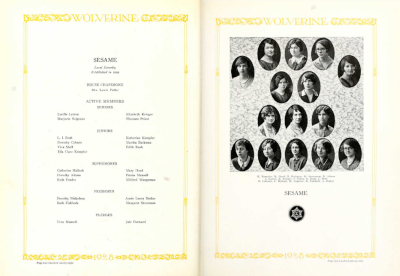Essays on the people, buildings, and events in the conjoined histories of East Lansing and Michigan State University, with a particular interest in the Michigan Agricultural College era (1855–1925), and a timeline of significant events.
Featured Post
The mystery of Sesame Society
Local societies at M.A.C. functioned much like independent fraternities and sororities. After the college changed its policy in 1920, these societies “went national” and affiliated as chapters of national fraternal organizations. But how did one society become not one, but two different sorority chapters? Read More.
